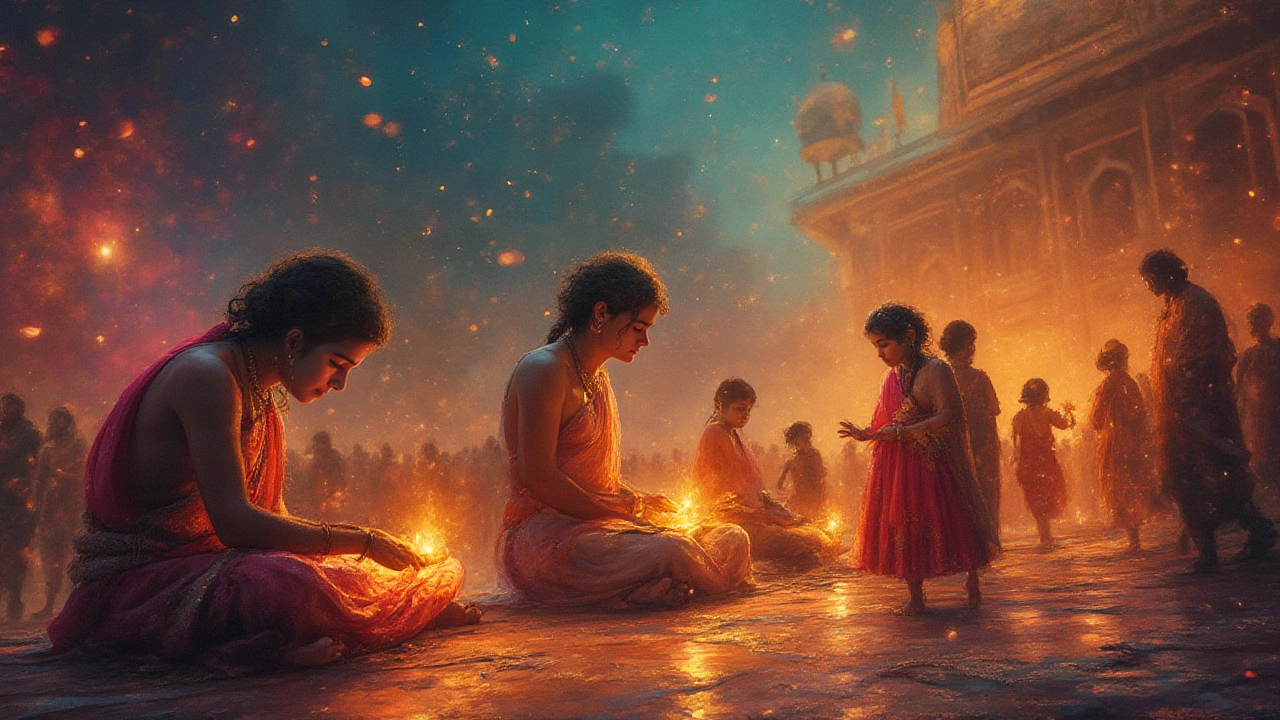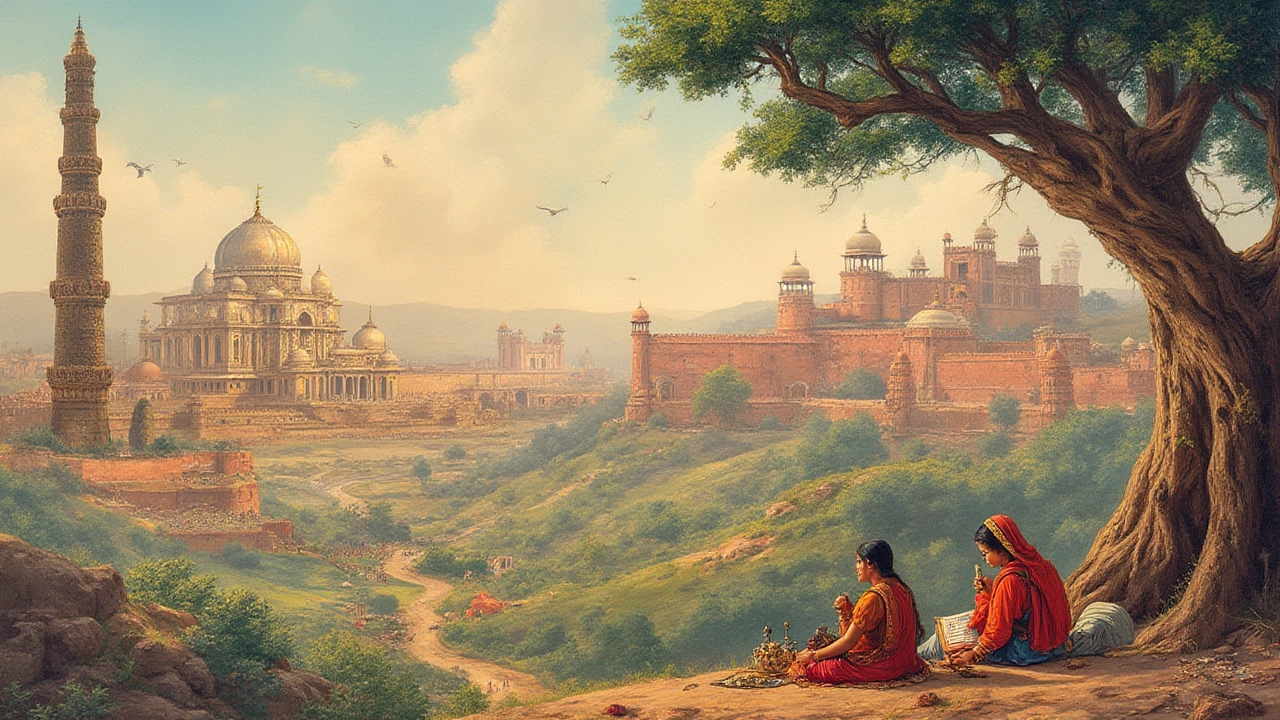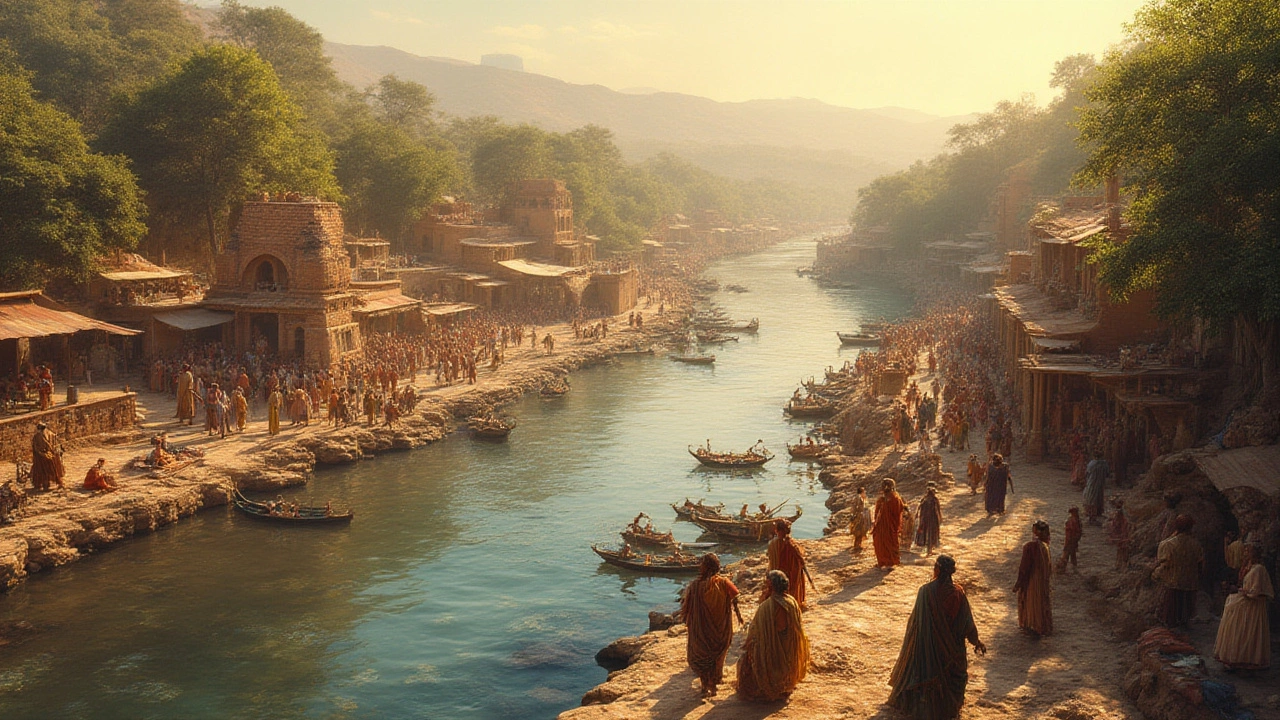Think your family's old photo albums are impressive? India's got roots dug far deeper than most realize—so deep, most places can't match them. From city ruins poking out of the Punjab and Sindh to Hindu hymns that echo through the ages, Indian heritage isn’t just old; it’s mind-blowingly ancient. This isn’t about simple relics or faded paintings. We're talking about a living tradition stretched across thousands of years, celebrated every day on busy street corners, in quiet temples, and at every festival that lights up the night sky from Mumbai to Madurai.
Mapping the Dawn of Indian Heritage
Think of ancient India, and your mind probably jumps straight to the Indus Valley Civilization. Still, the real story begins even earlier. Archaeologists have unearthed stone tools, cave paintings, and burial sites that go back at least 50,000 years. The Bhimbetka rock shelters in Madhya Pradesh, for example, hold cave art that’s older than the pyramids. Try picturing prehistoric families painting those walls by firelight, recording their lives in vivid ochre and charcoal.
Fast forward to about 3300 BCE, the Indus Valley cities—like Harappa and Mohenjo-daro—change everything. These weren’t just clusters of mud huts. They were planned urban centers with sewage systems, straight streets, public baths, and standardized brick sizes. Something wild? The famous 'Dancing Girl' bronze statue was cast around 2500 BCE by expert metalworkers using techniques lost in other parts of the world for another thousand years.
The DNA of Indian heritage winds through these roots: urban planning, early trade, communal life, and the spark of art and ritual. Alongside the Indus Valley, other ancient cultures flourished around the subcontinent—from the megaliths of South India to the tribal societies of the Northeast. Each added its own brushstroke to this giant, evolving mural that’s still expanding today.
Religions, Stories, and Language: Heritage Etched in Belief and Words
India’s spiritual heritage was never a one-note melody. The sacred Sanskrit texts—the Vedas—were first sung around 1500 BCE by priests in the north. These oral poems described rituals, philosophies, songs, and the earliest foundations of what today we call Hinduism. And the Vedas didn’t spring from nowhere. Local folk traditions, ancestor-worship rituals, and a hundred tiny faiths braided into the tapestry, still visible in today's village festivals and harvest celebrations.
Soon after, Jainism and Buddhism emerged. The Buddha’s sermons and Mahavira’s teachings became forces across Asia. Look at ancient inscriptions: Prakrit, Pali, Tamil—dozens of languages flourished. The sheer diversity is mind-boggling. The earliest written scripts appeared on Harappan seals, then later in the Brahmi and Tamil Brahmi scripts found across India by 300 BCE. Here’s a tip: reading temple walls isn’t just fun—some inscriptions have literally changed how we think about India’s history, revealing ancient kings, lost battles, and trade routes connecting India from Rome to Java.
Don’t forget the epics—Mahabharata and Ramayana. These were composed over centuries, tugging at generations torn between duty and love. They’re still being reimagined in comic books, movies, and every school play from Varanasi to Brisbane.

Rise of Kingdoms, Art, and Exchange
Indian heritage didn’t stop growing once cities and shrines burst onto the scene. After the Indus era faded, dozens of new kingdoms rose: the Maurya, Gupta, Chola, and others. Each left its own flavor—from stone domes like the Sanchi Stupa to sprawling shore temples in Tamil Nadu. Wild fact: the Iron Pillar of Delhi, over 1,600 years old, barely rusted in all that time, and scientists still debate why.
Trade didn’t just bring silk and spices. It carried ideas. Greek, Persian, Central Asian, and Chinese travelers wandered India’s streets. People like Fa Hien and Megasthenes wrote about what they saw, whether they were gobsmacked by yoga gurus, the chaos in market lanes, or the massive libraries (like the one at Nalanda, which was bigger than more modern university campuses in the West).
If you think of Indian art as just temple carvings, look closer. Paintings in Ajanta Caves glow with life after almost 2,000 years; copper plates from Kerala list entire family trees; city streets in Jaipur are still colored with the plan laid out by 18th-century architects.
Indian Heritage in Everyday Life
It’s easy to imagine heritage as something locked in display cases or scripts. But Indian heritage is part of daily life. Cities and villages alike pulse with rituals that have barely changed in centuries. Diwali lamps, Pongal pots, Holi colors—they all trace back to age-old traditions. Family recipes, like dosas and biryani, follow centuries-old methods. Jewelry, saris, music—tools handed down through generations, each with a story.
What about language? Hundreds of Indian languages and dialects are alive today. The Eighth Schedule of India’s constitution lists 22 official languages, but there are over 1,600 spoken. That’s more linguistic diversity than almost anywhere else. Bikes buzz past sari-clad aunties chatting in Bengali, kids swap jokes in Kannada at bus stops—the variety is daily life, not museum stuff.
Even tech is jumping in. Apps remind folks of devotional chants. Whatsapp groups organize community temple clean-ups. Family WhatsApp groups are the new ‘oral tradition’—uncles passing on stories with emojis and memes. It’s heritage, just packed for the 21st century.

Why the Story Never Ends
The question “When did Indian heritage start?” doesn’t have a final, clear answer, because new discoveries keep rewriting the script. Just a few years ago, excavations in Rakhigarhi pushed the Indus Valley timeline back hundreds of years—making it one of the world’s oldest urban centers. Over in Odisha, a lost city was rediscovered buried under fields, bringing surprises to light all over again.
Heritage isn’t just old statues and punch cards; it’s alive, humming in Bollywood beats, cricket matches, and the giant Indian wedding next door. It’s the mix of tech, tradition, faith, hustle, hospitality, and restless change. Every festival, every home-cooked meal, every prayer flag strung across an alley—it’s all heritage. It started long ago but never actually ended.
Curious about some numbers? Check out this snapshot:
| Period / Culture | Approximate Years Ago | Major Achievements |
|---|---|---|
| Stone Age (Bhimbetka Shelters) | 50,000+ | Cave art, tools |
| Indus Valley Civilization | 5,300–3,700 | Cities, plumbing, trade |
| Vedic Period | 3,500–2,500 | Sanskrit hymns, early Hinduism |
| Gupta Empire | 1,700–1,500 | Golden Age of art, maths, science |
| Today | 0 | Over 1,600 languages spoken, living traditions |
So next time you see a temple on a lunchbox or rasgulla in a bakery, remember: Indian heritage started deep in prehistory, but it’s not stuck in the past. It’s living all around us—changing, surprising, and refusing to fade away.
